Camino de Santiago
What is the Camino de Santiago?
According to legend, Herod Agrippa executed St. James in 44AD and his remains were brought to Spain and buried in Santiago de Compostela. Since then, several pilgrims have made their way to Santiago de Compostela and the tomb of St. James in the Cathedral at Santiago de Compostela. The Camino de Santiago (or "Way of St. James" in English) is a long distance trek to the tomb of St. James in Santiago de Compostela. The trek originates in multiple points throughout Europe and ends in the city of Santiago de Compostela in Northwest Spain. The Way/s of St. James have been around for thousands of years. Some of the routes follow ancient Roman trade routes in northwestern Spain, all the way to the Atlantic Ocean. One of the more popular routes is the French Way. After a decline in the number of pilgrims after the 13th century due to various reasons, there has been a surge in the number of trekkers since the late 1980s. Though once a strictly religious pilgrimage, the Camino today is a UNESCO world heritage site and has become popular with people of all beliefs - religious and non-religious. Many walk the Camino today to enjoy its rich cultural history and heritage, its ancient architecture, its beautiful scenery or simply enjoy the opportunity for long distance trekking. It is a unique experience, a time for reflection and will continue to inspire you long after your journey is over. Regardless of your purpose for walking the camino, you refer to your fellow caminos and yourself as 'pilgrims'.
Credit goes to Don Elías Valiña Sampedro (1929 – 1989), the parish priest in O Cebreiro and a Camino pioneer. He put himself in charge of reviving the Camino route. How did he do that? He cleaned and marked the trails along the French Way. The story goes that he drove across northern Spain with yellow paint and painted the iconic yellow arrows that trekkers use to navigate their way to Santiago de Compostela.
We arrived in Madrid on July 3 around noon slightly jetlagged and sleep deprived. The taxi ride to our Hotel (Liabeny) was short and pleasant. Our taxi driver, Paloma, was chatty and very excited to hear that we will be walking the Camino. It turned out that she was from Sarria, a town that we will be passing as we walked the Camino. She had a lot of advice and tips for us. We listened carefully.
chgeorgeca
15 chapters
16 Apr 2020
Dog Day Afternoon in Madrid
July 03, 2015
|
Madrid, Madrid, Spain and Canary Islands
What is the Camino de Santiago?
According to legend, Herod Agrippa executed St. James in 44AD and his remains were brought to Spain and buried in Santiago de Compostela. Since then, several pilgrims have made their way to Santiago de Compostela and the tomb of St. James in the Cathedral at Santiago de Compostela. The Camino de Santiago (or "Way of St. James" in English) is a long distance trek to the tomb of St. James in Santiago de Compostela. The trek originates in multiple points throughout Europe and ends in the city of Santiago de Compostela in Northwest Spain. The Way/s of St. James have been around for thousands of years. Some of the routes follow ancient Roman trade routes in northwestern Spain, all the way to the Atlantic Ocean. One of the more popular routes is the French Way. After a decline in the number of pilgrims after the 13th century due to various reasons, there has been a surge in the number of trekkers since the late 1980s. Though once a strictly religious pilgrimage, the Camino today is a UNESCO world heritage site and has become popular with people of all beliefs - religious and non-religious. Many walk the Camino today to enjoy its rich cultural history and heritage, its ancient architecture, its beautiful scenery or simply enjoy the opportunity for long distance trekking. It is a unique experience, a time for reflection and will continue to inspire you long after your journey is over. Regardless of your purpose for walking the camino, you refer to your fellow caminos and yourself as 'pilgrims'.
Credit goes to Don Elías Valiña Sampedro (1929 – 1989), the parish priest in O Cebreiro and a Camino pioneer. He put himself in charge of reviving the Camino route. How did he do that? He cleaned and marked the trails along the French Way. The story goes that he drove across northern Spain with yellow paint and painted the iconic yellow arrows that trekkers use to navigate their way to Santiago de Compostela.
We arrived in Madrid on July 3 around noon slightly jetlagged and sleep deprived. The taxi ride to our Hotel (Liabeny) was short and pleasant. Our taxi driver, Paloma, was chatty and very excited to hear that we will be walking the Camino. It turned out that she was from Sarria, a town that we will be passing as we walked the Camino. She had a lot of advice and tips for us. We listened carefully.
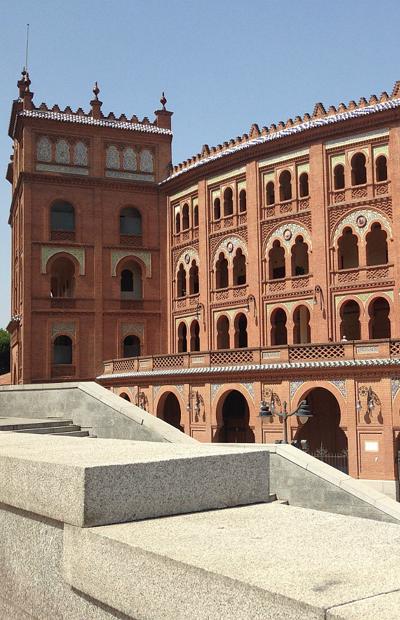
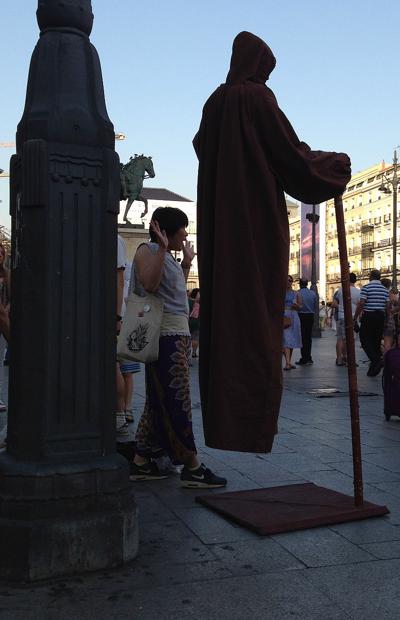
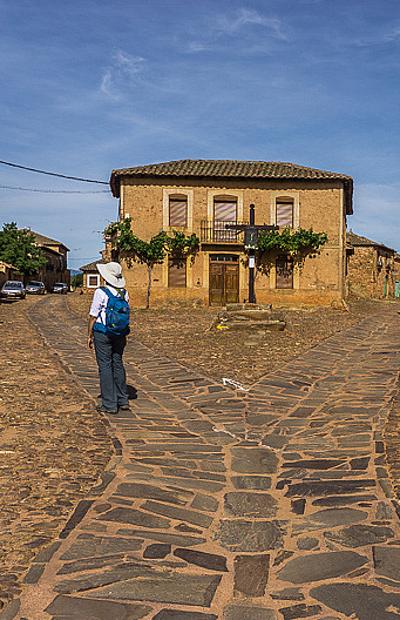
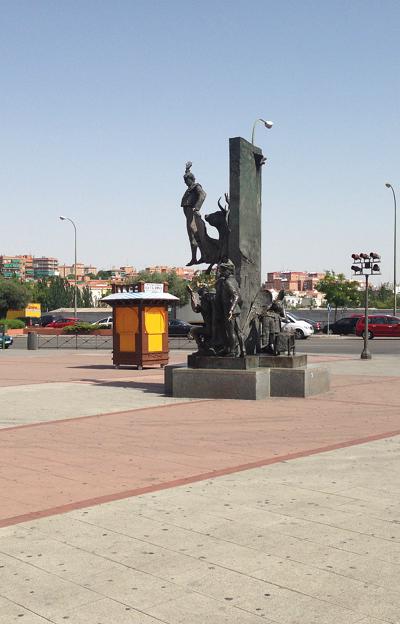
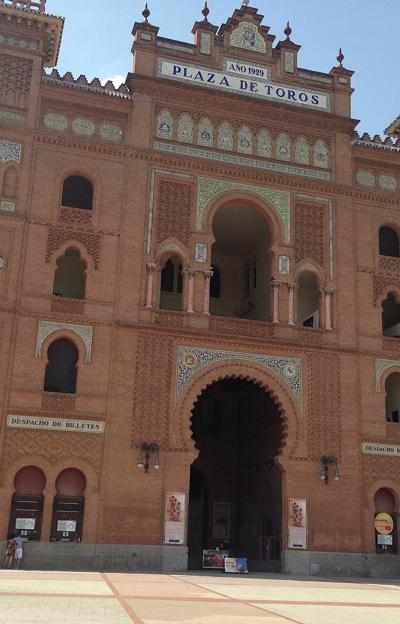
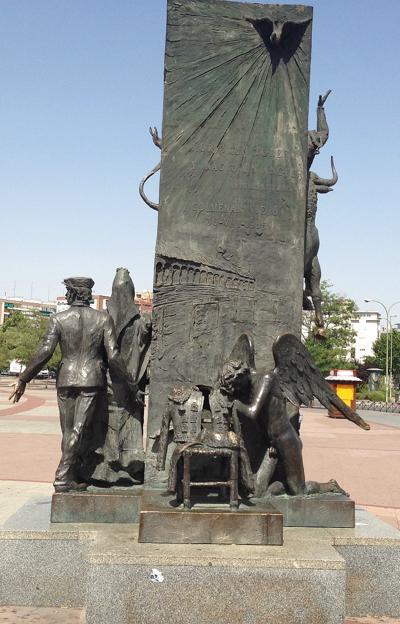
Upon arrival at our hotel, we freshened up and immediately went out to explore the city of Madrid. Temperatures outside were scorching, hovering at 40 Celsius. We walked around the streets and enjoyed some of the city's highlights. We had an early start the next day to Chamartin Station to catch our train to Astorga. Our hotel concierge suggested we walk to the old part of town and dine in one of the many restaurants there. We enjoyed a simple meal of oxtail stew and bread and walked back to our hotel. Everyone at the hotel was excited that we were walking the camino – they kept saying the same thing over and over again – you will meet so many people, Buen Camino!
In the next few days these were the two words that I would be speaking the most!
Where I stayed
Hotel Liabeny - Calle Salud, 3, Madrid, Spain
I rated this place 4/5 - Great!
The staff was very helpful, the breakfast was superb and the hotel is located in the middle of the city!
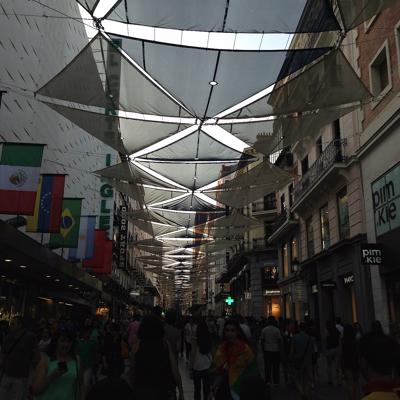
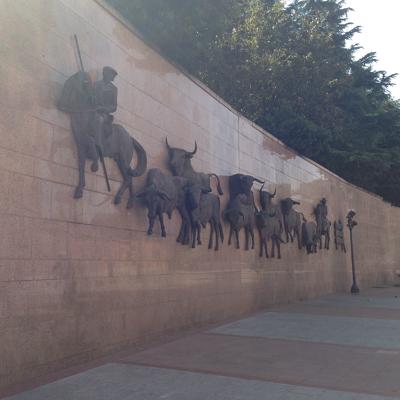
1.
Dog Day Afternoon in Madrid
2.
Exploring Astorga
3.
Our first day on the Camino
4.
Ups and Downs
5.
Orchards and Vineyards
6.
A pretty town and a riverside walk!
7.
A Heavenly Day!
8.
Camino Miracle
9.
The Long Walk to Sarria
10.
A tale of two cities: Old and new Portomarin
11.
A traditional and classy homestay
12.
'The Way' to Castaneda!
13.
Mixed feelings, aches and pains!
14.
Santiago de Compostela!
15.
The Final Stretch!
Share your travel adventures like this!
Create your own travel blog in one step
Share with friends and family to follow your journey
Easy set up, no technical knowledge needed and unlimited storage!